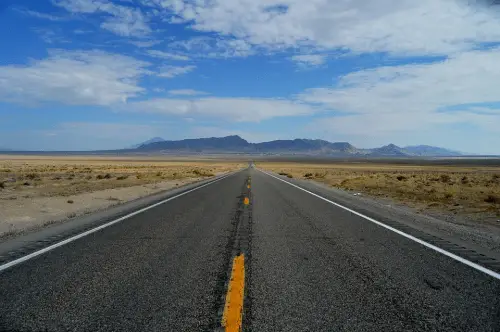Highways and freeways are major roads that grant access to major cities. But while they are commonly used interchangeably, the two kinds of roads actually have structural differences that make them applicable for specific traveling needs.
Summary Table
| Highway | Freeway |
| Accessed via an intersection or a ramp | Accessed via a ramp |
| Built with toll booths, traffic signals, pedestrian lanes, and intersections | Built without toll booths, traffic signals, pedestrian lanes, and intersections |
| Designed to alleviate traffic congestion and to facilitate faster travel between cities | Designed to minimize travel times for longer distances |
| Has two to four lanes | Has four to six lanes |
| Usually has no barrier between two opposing lanes | Usually has a barrier between two opposing lanes |
| Imposes a lower speed limit | Imposes a higher speed limit |
| Grants general access to all types of vehicles | Usually restricts the entry of motorcycles, bicycles, and heavy transport vehicles |
| Regulated and maintained by the state government | Mainly regulated and maintained by the federal government |
Descriptions

A highway is a major road that connects main roads and small roads.

A freeway, on the other hand, is a major road built with several lanes that facilitates fast travel.
Highway vs Freeway
They were built for the same purpose: to offer better access to a wide range of destinations. However, there is still a huge difference between a highway and a freeway.
Access
A highway can be accessed via an intersection or a ramp, which directs travelers to different areas, while a freeway is always linked to a ramp. Unlike a highway, a freeway does not have intersections since it is designed to facilitate fast travel.
Design
A freeway is basically a type of highway but it is structurally different from ordinary highways that serve as a link between main roads and small local roads. Unlike a highway, a freeway is free from toll booths, traffic signals, pedestrian lanes, and intersections.
Purpose
A highway serves as a parent road of small pathways, which lead to houses and other populated parts of cities and towns. Wider than ordinary city roads, a highway was designed to alleviate traffic congestion and to facilitate faster travel between cities. While a highway and a freeway both have a common goal, freeways are built to minimize travel times for longer distances. Just like a horse competing in a race, cars on a freeway can travel freely since there are no pedestrian lanes, traffic signals, and other structures that can cause delays.
Lanes
A highway usually has two to four lanes, while a freeway has between four and six lanes. Aside from the differences in the number of lanes, a freeway has a barrier between the two opposing directions, while a highway has none.
Speed Limit
Speed limits apply to all types of roads, and highways and freeways are no exception. However, between the two, cars on a freeway are allowed to travel faster since the main goal is to cut travel times. Typically, the speed limit imposed on highways is around 55 mph – a figure that’s usually 10-20 mph less than that of freeways.
Vehicular Restrictions
Unlike a highway that grants general access to all types of vehicles, a freeway has vehicular restrictions. In most cases, motorcycles, bicycles, and heavy transport vehicles cannot pass through freeways.
Maintenance
Highways are regulated and maintained by the state government, while most freeways are maintained by the federal government.





